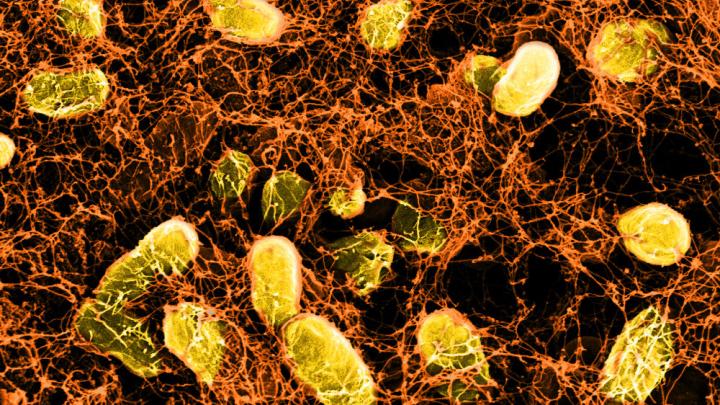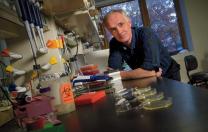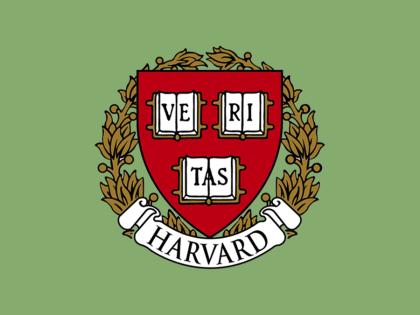Pond scum may not seem useful, but the substances bacteria produce that give bathtub slime its tenacity and the biofilm on the back of your tongue its mucilaginous qualities can be very useful indeed, says Neel Joshi. Joshi studies curli fibers, which are naturally produced by Escherichia coli bacteria when a single bacterium, given favorable conditions, replicatesuntil it forms a colony. Curli fibers resemble long, microscopic hairs, all roughly identical, that grow on the outside of each bacterium and form powerful bonds with each other and with surfaces. The formation of these layered, adhesive colonies on everything from the bottom of boats to teeth confers on these unicellular organisms a form of protection against antimicrobial agents, as well as the ability to acquire new genetic traits from each other, to exchange nutrients, and to cooperate by distributing demanding metabolic processes among different parts of the colony.
Joshi is an associate professor of chemical and biological engineering, with an office in the Wyss Institute and at the Harvard Paulson School of Engineering and Applied Sciences. His lab has essentially hijacked the bacteria’s production of these uniform fibers to create sustainable plastic-like materials that degrade naturally in the environment, and membranes that can be engineered to bind to or filter out contaminants in the environment, including in water. Such specific functions are difficult to achieve with manufactured plastics, Joshi explains. But because all curli fibers are alike, and each bacterium in a colony creates them using the same cellular machinery, a genetic manipulation of the bacteria readily enables useful modifications. “You can attach antibodies” (proteins that will bind with substances the body recognizes as alien) to the fibers, he points out, and every single curli fiber the bacteria produce thereafter will have many antibodies attached. That process could be used to program a specific binding interaction with any number of things: a surface, a metal, or even a soluble material. This allows the engineering of membranes capable of filtering out substances such as toxic heavy metals or other contaminants not just mechanically (by size, for example), but also chemically or biologically (by bonding to them).
Ongoing work in the lab is focused on adapting this technology for a variety of applications, including microbially derived replacements for conventional plastics, and self-regenerating hydrogels that can live inside the gut and treat inflammatory diseases such as ulcerative colitis. Such examples illustrate the advantage that synthetic biology has over the other engineering disciplines: it is both inexpensive to manufacture its products, and exacting to the smallest nanometer-scale detail. As Joshi’s colleague, Winthrop professor of genetics George Church, sums up that advantage, “Basically, you can build an atomically precise forest for the price of the sunlight.”
Industrial biotechnology based on engineered organisms, now estimated to be worth more than $145 billion annually, is an even bigger part of the U.S. economy than genetically modified crops or the manufacture of drugs. But for Joshi, the research is “exciting because it offers a way to make stuff that’s radically different from the way that we’ve made stuff. And the way that we built our civilization, essentially, has been dependent on oil. Figuring out how to build things using renewable resources is a huge driving force for synthetic biology in general, and something that’s becoming increasingly an imperative—something that we need to do.”








